In 2022 David Krut Workshop (DKW) invited Natalie Paneng to collaborate on a series of unique works on paper with printmaker, Sbongiseni Khulu – a process that has spanned continents over the following months and yielded a vibrant body of work unlike anything else in our archive.
Read below to learn more about Natalie’s collaboration!
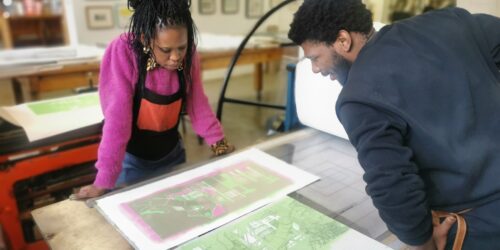
Words by Sbongiseni Khulu
In a world defined by 1s and 0s, each of us are both the main and playable characters. For some the world is no more than a black abyss of uncharted terrain waiting to be revealed one frame and one step at a time. Each step takes you further and further away from the start, to what feels like your limits at the end of the map – all in the hopes of accomplishing life’s mission of levelling up and winning the game. For some, the world is endless and as such there is no edge to the map. Life is only binary until one decides the code can be cracked.
In efforts to package Natalie’s artistic practice, the artist has gone on to classify herself, among many other things, as a world and multiverse builder.
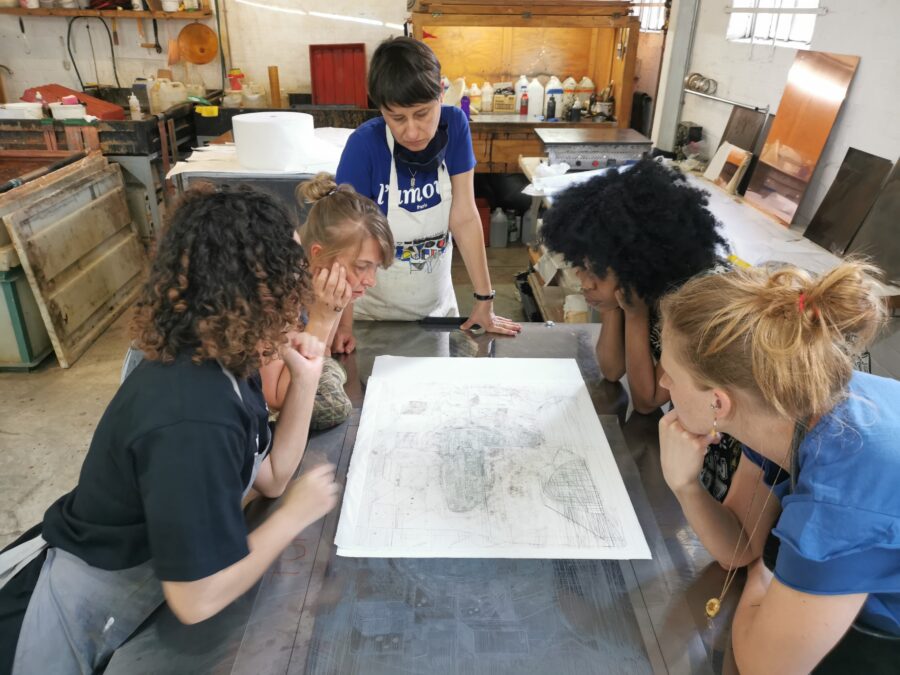
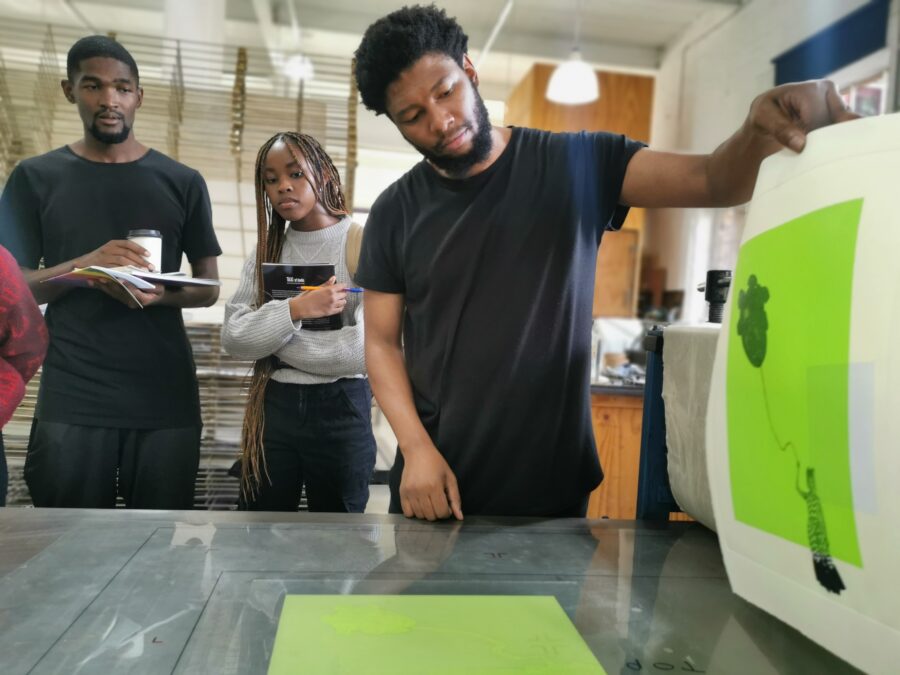
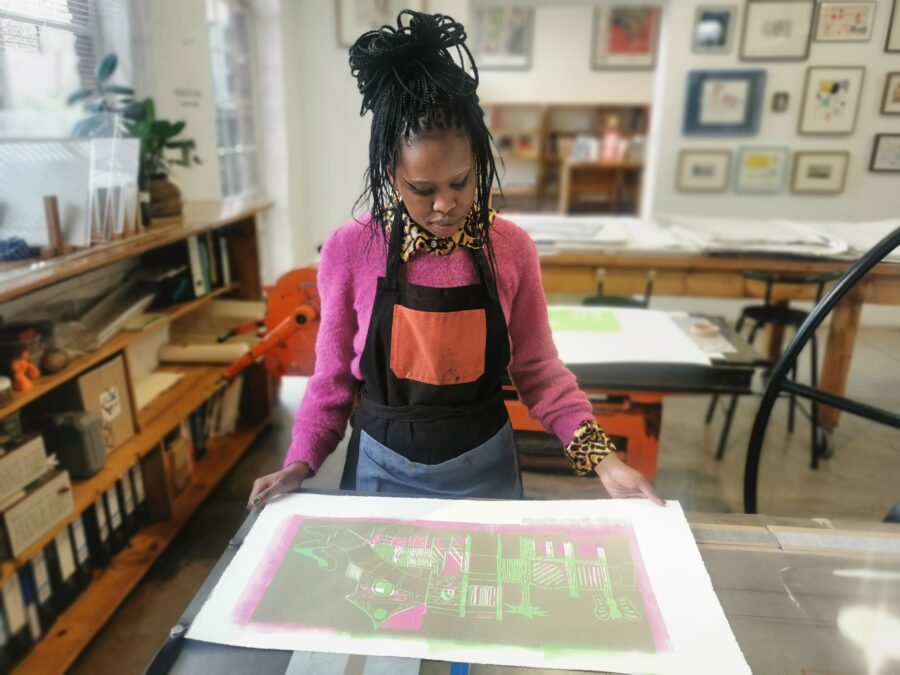
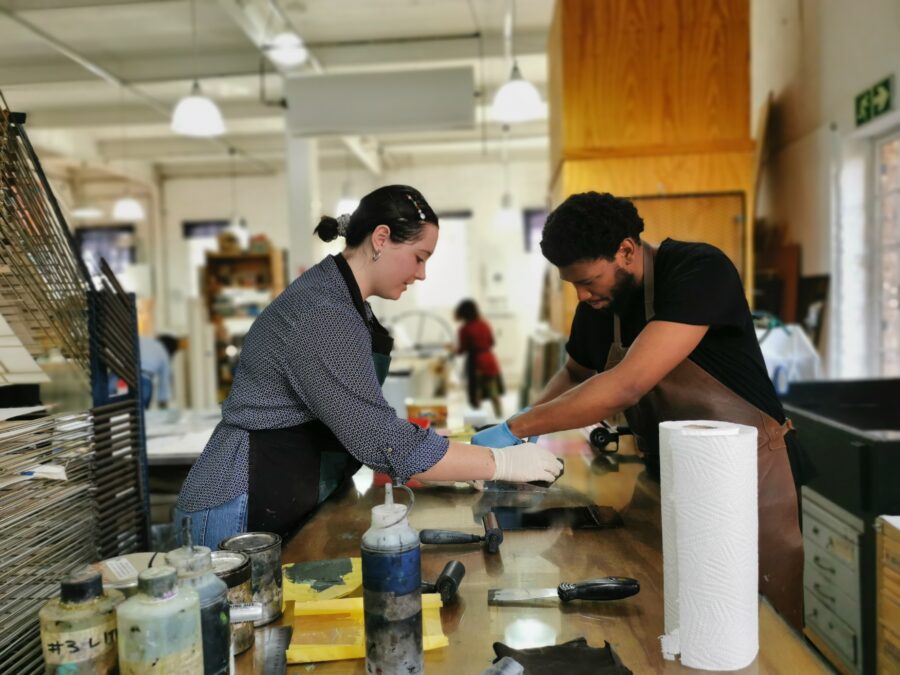
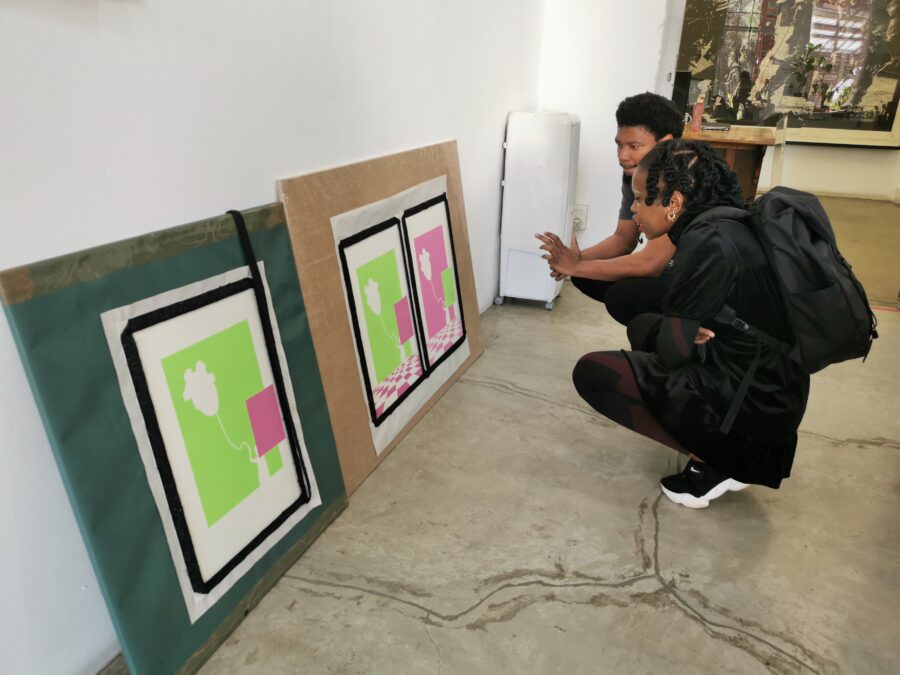
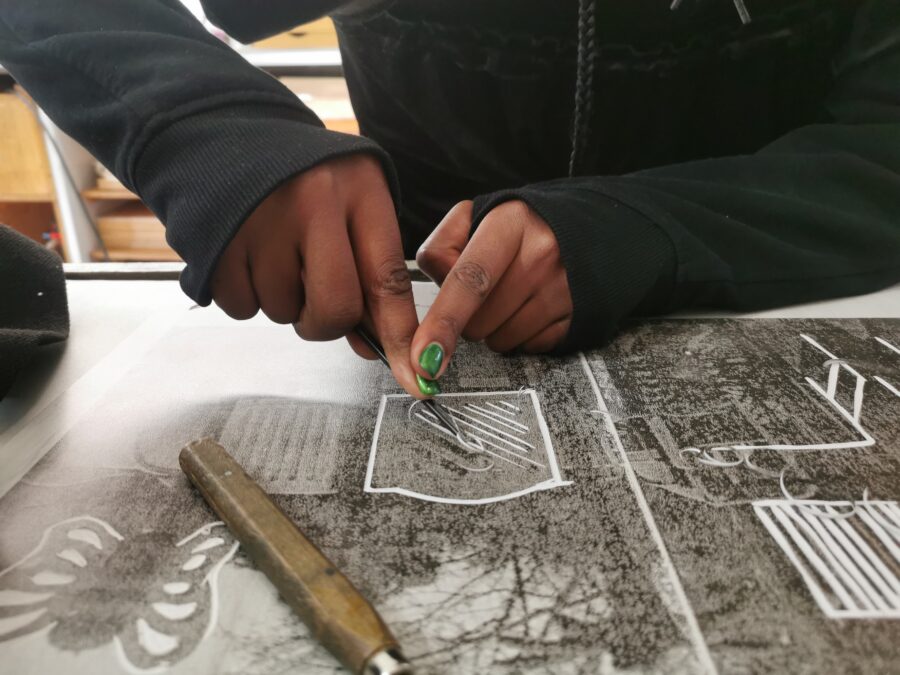
It is from this line of thinking and having had the pleasure of collaborating with Natalie virtually and IRL that I believe the works created exist in tandem with Lewis Carroll’s Alice in Wonderland and as a response to the Digital Age in which we exist.
In a time where abundance has been made the standard, Natalie’s works are isolated dreamscapes that make use of only 3 colours green, pink and black. This decision creates a sense of openness in an otherwise overloaded system/environment. With each piece Natalie takes us through a journey of self-perception similar to that of Alice. In Wonderland, Alice’s shape, size, environment and perception of time is ever-changing, thus her notion of self is constantly in question and as a result self-awareness is brought to being by overloading her, much like when a vivid dream turns lucid and suddenly you’re awake.
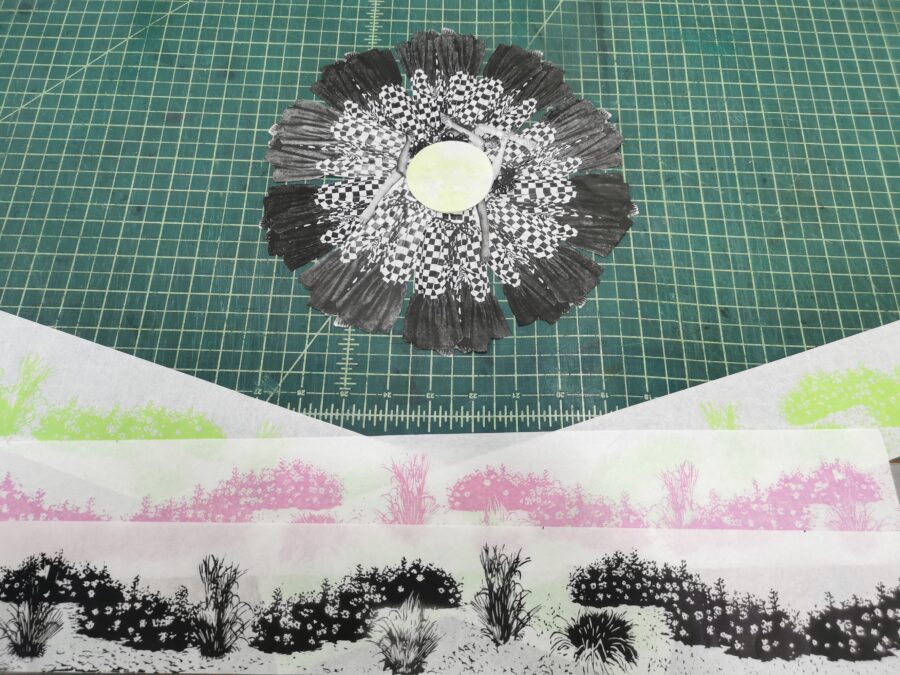
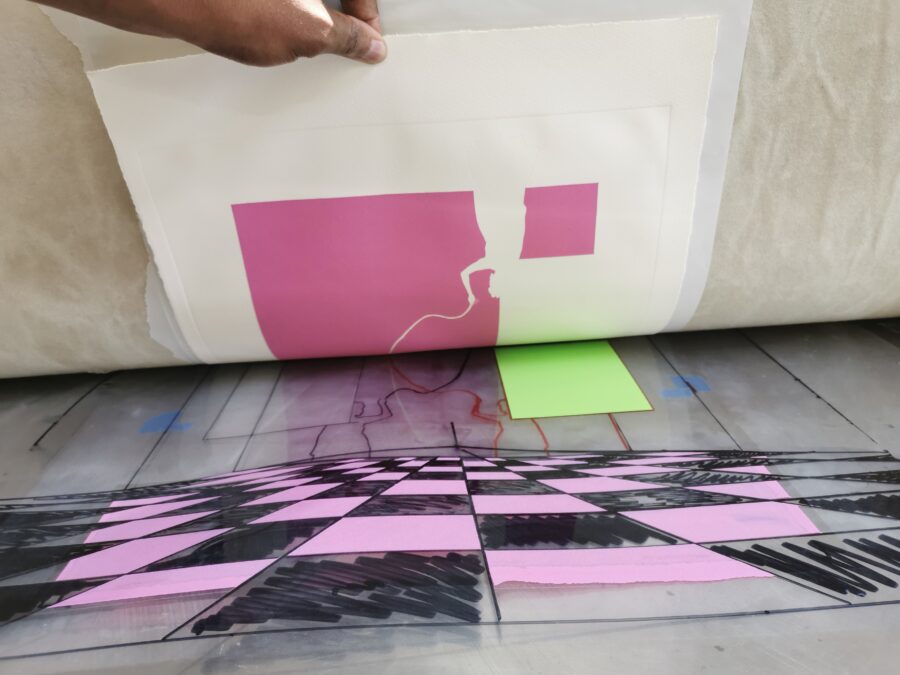
That being said, the printing processes behind the making of the works wasn’t as much of a surreal experience as the works themselves. In fact, as a printmaker that function is slightly different. The majority of printed figures was done onto thin pieces of traditional handmade Japanese papers (Gampi, Tosa washi) and often in multiple layers of 2 or more depending on the desired flesh tones or glitch effect. From there each piece would require precise cutting and collaging in order to create intricate depths of field thanks to the isolated relief and monotype layers. As previously mentioned not all of the printed figures were treated the same, for those done directly onto the backing paper registration was, is and will always be key. Otherwise it’s off with your head…
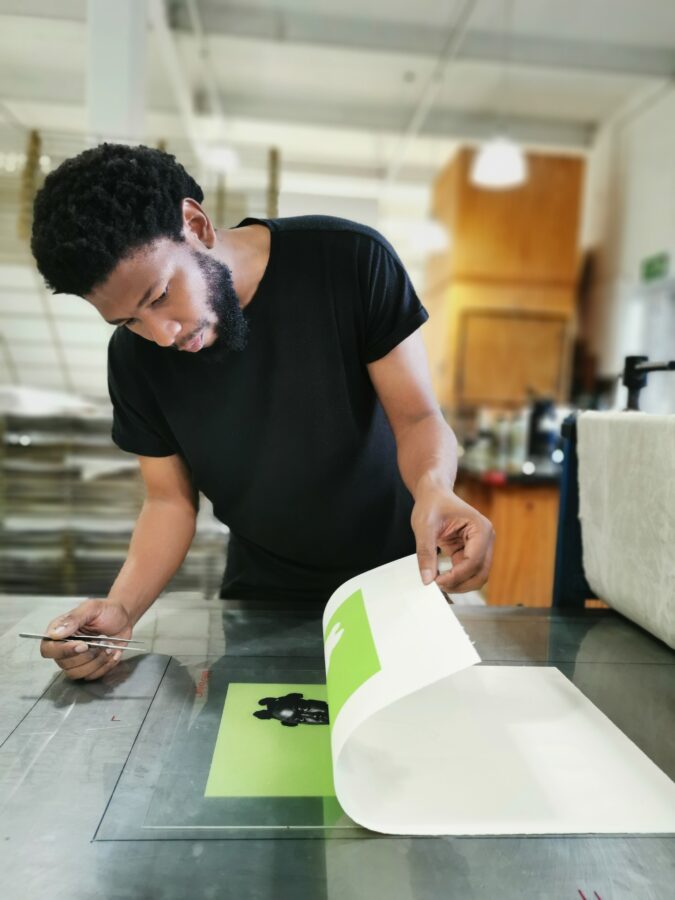
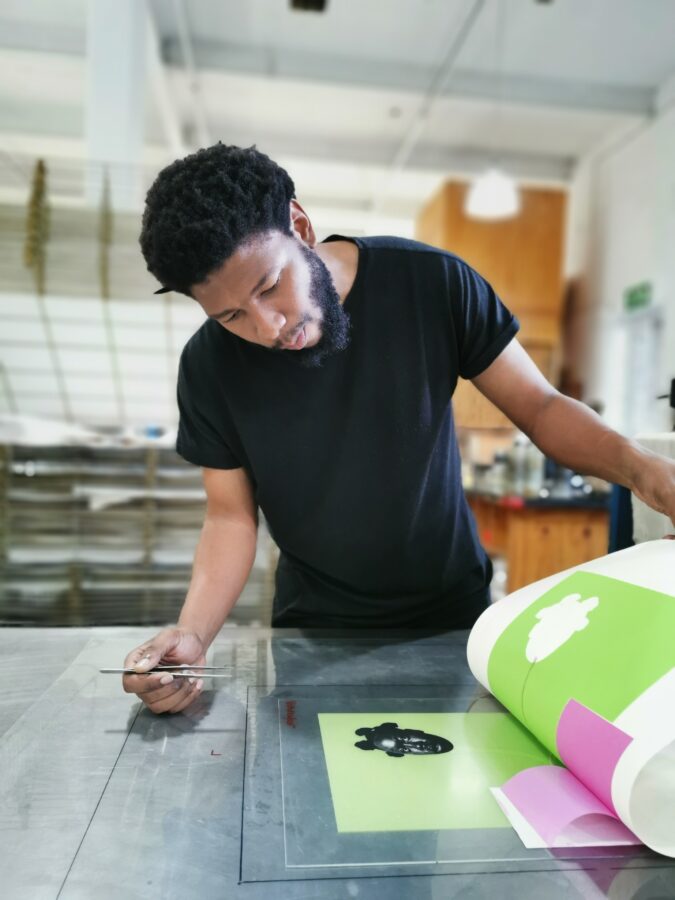

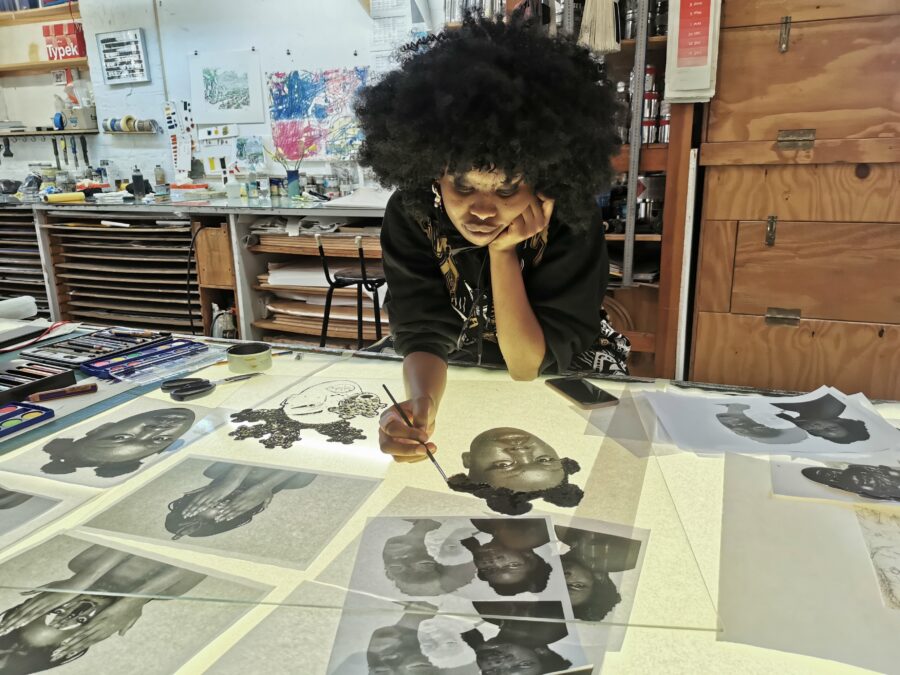
Natalie Paneng, a multi-disciplinary artist, identifies as a world-builder, using her practice to explore and share imagined and alternative realities through various mediums. Combining her self-taught digital skills with her theatre background, she creates vibrant works that hold a clear and unique point of view.
Paneng connected with our operations after being selected for a residency with the Leipzig International Art Programme (LIA), associated with The Centre for the Less Good Idea. This residency, aimed at South African digital media artists, involved a collaborative printmaking project in Leipzig, Germany. David Krut Projects helped with the selection process and provided initial printmaking exposure to the artists before their overseas residencies. In 2022 David Krut Workshop (DKW) invited Paneng to collaborate on a series of prints with Sbongiseni Khulu, a process that has spanned continents over the following months and yielded a vibrant body of work unlike anything else in our archive.
Her print works, made in collaboration with DKW printmaker Sbongiseni Khulu, are distinguished by their punchy and playful use of pink and bright green. After starting with the monotype process, Paneng expressed interest in linocut for its graphic quality as well as pronto lithography to incorporate her character into her work. The body of work progressed into a series of whimsical scenes set in Paneng’s checker-board playground, combing the printmaking processes of linocut, pronto lithography and embossing.
